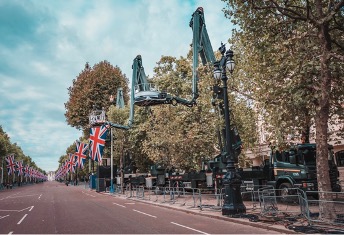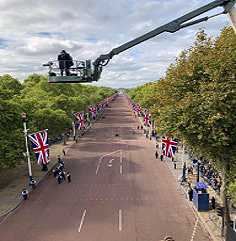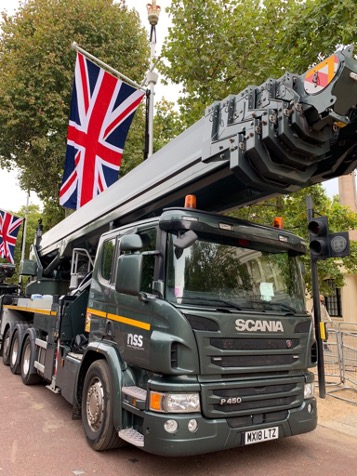 NSS Hire, part of PTSG Building Access Specialists Ltd, are experts in the hire and operation of powered access platforms across the UK, Ireland and even mainland Europe. Their highly skilled and friendly team has significant experience supplying a comprehensive range of machines, everything from cherry-pickers to cage winches, to multiple industries and intimately understand the challenges faced by each.
NSS Hire, part of PTSG Building Access Specialists Ltd, are experts in the hire and operation of powered access platforms across the UK, Ireland and even mainland Europe. Their highly skilled and friendly team has significant experience supplying a comprehensive range of machines, everything from cherry-pickers to cage winches, to multiple industries and intimately understand the challenges faced by each.
NSS has been the go-to provider of access equipment for the BBC for the past ten years, especially when broadcasting involves the Royal Family. Its operatives were proud to play their part in Operation London Bridge following the sad passing of the Queen in September. (Operation London Bridge is the codename for the funeral plan for Queen Elizabeth II.)
As a result of the long-term working relationship between the BBC and NSS Hire, we were chosen to support the BBC for Operation London Bridge. Planning for the ceremony has taken place over the course of the last ten years, involving annual meetings and on many occasions a full walk around of the areas of London in which the ceremony would take place.
 11 access machines were planned to be used but this was reduced to ten due to a last-minute request being raised for Tothill Street. After the call was made, NSS Hire started to deploy the team and machines required for the event. All but one of the machines was used as a camera position for either the BBC, ITV or Sky.
11 access machines were planned to be used but this was reduced to ten due to a last-minute request being raised for Tothill Street. After the call was made, NSS Hire started to deploy the team and machines required for the event. All but one of the machines was used as a camera position for either the BBC, ITV or Sky.
 One of the images shows one a machine putting the camera person in prime position. The last remaining hoist was used for RF – essentially antennae – which are fixed to the basket and erected. Each camera then bounces its feed to this machine and onto the remote broadcasting studio close by, which in turn streams live to our television sets.
One of the images shows one a machine putting the camera person in prime position. The last remaining hoist was used for RF – essentially antennae – which are fixed to the basket and erected. Each camera then bounces its feed to this machine and onto the remote broadcasting studio close by, which in turn streams live to our television sets.
The team remained on the ground to control the machine for either the camera person or RF. The NSS Hire operator would continuously communicate with his client (camera person), making sure they were happy with the positioning. Once in position, the camera person would usually stay there for up to ten hours at a time before commanding the operator to bring them back down to solid ground.
The UK and much of the work witnessed the results on 19th September, most of the shots being taken from machines provided by NSS Hire.

